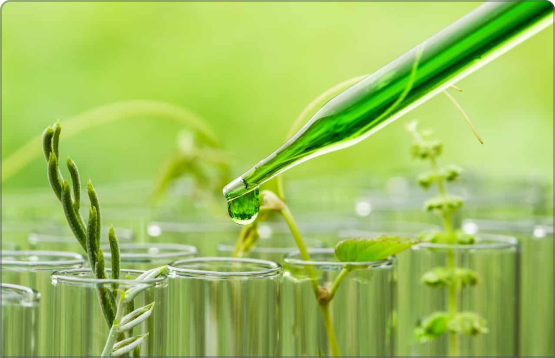Biotechnology and Environmental Applications
Sensors and diagnosis
Biomedical applications
Protection of environment and heritage



DESCRIPTION
The development of nanotechnology is opening new avenues for applications in biotechnology, biomedicine and environmental sciences. Moreover, the conservation of valuable materials of artistic and architectonic heritage benefits from analytical techniques initially developed for the nanoscale. In CNATS we investigate nanomaterials in different contexts of these areas.
a) Sensors and diagnosis
Novel methods based on nanomaterials and advanced spectroscopic and mass spectrometry techniques are emerging for the sensitive detection of organic molecules and biomolecules in physiological and ecological environments. In CNATS we investigate porous nanomaterials for optical sensing and biomedical applications, recently with a strong focus on Luminescent Metal-Organic Frameworks (LMOFs). We also employ nanostructured substrates and plasmonic nanoparticles to enhance the efficiency of laser-desoprtion-based ion sources for mass spectrometry biomolecular analysis.
b) Biomedical applications
The interaction of nanomaterials with biological tissues and cells is paving the way for novel treatments of chronical diseases, such as different types of cancer. We explore nanomaterials with specific (bio)chemical functionalizations and porous structures, with a potential for the selective cell therapies or improved procedures for drug delivery. In addition, CNATS has a strong focus on the search of clinical biomarkers (lipidomic or proteomic) with high resolution mass spectrometry techniques.
c) Protection of environment and heritage
The protection of the environmental and cultural heritage demands efficient techniques for the characterization of their mineral, organic and biological components. CNATS combines a range of spectroscopy, microscopy and mass spectrometry techniques to wide range of multidisciplinary projects related for instance to the effect of wild fires on the organic matter in soils and the role of microorganisms in their regeneration, or to the characterization of substrates, aglutinants, fats or pigments in historic art pieces. A recent line of research employs proteomics to identify fossils from autochthonous and domesticated fauna in the Iberian peninsula back to the early neolithic.
Associated Staff
Sensors and diagnosis
Bruno Martínez Haya
We are interested in molecular recognition, with a focus on proton-bonded systems, which we investigate in isolated benchmark systems by means of infrared ion spectroscopy with laser techniques. In addition, we apply high resolution mass spectrometry to a broad range of biomolecular problems in fields as diverse as biotechnology, environmental scie...
Más informaciónBruno Martínez Haya
Supramolecular Chemistry, Proton bonding, Biomolecular Mass Spectrometry
We are interested in molecular recognition, with a focus on proton-bonded systems, which we investigate in isolated benchmark systems by means of infrared ion spectroscopy with laser techniques. In addition, we apply high resolution mass spectrometry to a broad range of biomolecular problems in fields as diverse as biotechnology, environmental science or archaeology.
José María Pedrosa Poyato
Sensor Arrays using Luminescent Metal-Organic Frameworks for the Optical Detection of Explosive Vapours and Toxic Substances. Guided Design and Growth of Luminescent Metal Organic Frameworks for the Development of Optical Gas Sensors. Encapsulating agents based on the use of metal organic frameworks as new approaching to eradicate HIV, and other ...
Más informaciónJosé María Pedrosa Poyato
Organic Materials Engineering Group for environmental and biotechnological applications
Sensor Arrays using Luminescent Metal-Organic Frameworks for the Optical Detection of Explosive Vapours and Toxic Substances. Guided Design and Growth of Luminescent Metal Organic Frameworks for the Development of Optical Gas Sensors. Encapsulating agents based on the use of metal organic frameworks as new approaching to eradicate HIV, and other smart drug delivery. Development and optimisation of optical systems for analysis and QC in food and pharmaceutical industries
Manuel Jesús López Baroni
I investigate the ethical and legal implications of so-called disruptive technologies: Nanotechnology; biotechnology, synthetic biology, neurotechnologies and Artificial Intelligence.
Más informaciónManuel Jesús López Baroni
Ethics of emerging technologies. Bioethics
I investigate the ethical and legal implications of so-called disruptive technologies: Nanotechnology; biotechnology, synthetic biology, neurotechnologies and Artificial Intelligence.
Tania Isabel Lopes da Costa
Our research is aimed at the design, synthesis and application of pororus materials for the encapsulation of drugs with biocompatible materials for delayed release.
Más informaciónTania Isabel Lopes da Costa
Porous materials for biomedical applciations
Our research is aimed at the design, synthesis and application of pororus materials for the encapsulation of drugs with biocompatible materials for delayed release.
Juan Jesús Romero Guerrero
juanjesus.romero.guerrero@gmail.com
The research focuses on the development of devices based on metal-organic frameworks (MOFs) for environmental and nanotechnology applications. The study involves investigating the methods for combining or depositing MOFs onto different substrates to make these materials useful in research areas like chemical sensors, energy storage, CO2 reduction, ...
Más informaciónJuan Jesús Romero Guerrero
juanjesus.romero.guerrero@gmail.com
MOFs based devices for environmental and nanotechnology applications.
The research focuses on the development of devices based on metal-organic frameworks (MOFs) for environmental and nanotechnology applications. The study involves investigating the methods for combining or depositing MOFs onto different substrates to make these materials useful in research areas like chemical sensors, energy storage, CO2 reduction, or water splitting.
Biomedical applications
Bruno Martínez Haya
We are interested in molecular recognition, with a focus on proton-bonded systems, which we investigate in isolated benchmark systems by means of infrared ion spectroscopy with laser techniques. In addition, we apply high resolution mass spectrometry to a broad range of biomolecular problems in fields as diverse as biotechnology, environmental scie...
Más informaciónBruno Martínez Haya
Supramolecular Chemistry, Proton bonding, Biomolecular Mass Spectrometry
We are interested in molecular recognition, with a focus on proton-bonded systems, which we investigate in isolated benchmark systems by means of infrared ion spectroscopy with laser techniques. In addition, we apply high resolution mass spectrometry to a broad range of biomolecular problems in fields as diverse as biotechnology, environmental science or archaeology.
José María Pedrosa Poyato
Sensor Arrays using Luminescent Metal-Organic Frameworks for the Optical Detection of Explosive Vapours and Toxic Substances. Guided Design and Growth of Luminescent Metal Organic Frameworks for the Development of Optical Gas Sensors. Encapsulating agents based on the use of metal organic frameworks as new approaching to eradicate HIV, and other ...
Más informaciónJosé María Pedrosa Poyato
Organic Materials Engineering Group for environmental and biotechnological applications
Sensor Arrays using Luminescent Metal-Organic Frameworks for the Optical Detection of Explosive Vapours and Toxic Substances. Guided Design and Growth of Luminescent Metal Organic Frameworks for the Development of Optical Gas Sensors. Encapsulating agents based on the use of metal organic frameworks as new approaching to eradicate HIV, and other smart drug delivery. Development and optimisation of optical systems for analysis and QC in food and pharmaceutical industries
Manuel Jesús López Baroni
I investigate the ethical and legal implications of so-called disruptive technologies: Nanotechnology; biotechnology, synthetic biology, neurotechnologies and Artificial Intelligence.
Más informaciónManuel Jesús López Baroni
Ethics of emerging technologies. Bioethics
I investigate the ethical and legal implications of so-called disruptive technologies: Nanotechnology; biotechnology, synthetic biology, neurotechnologies and Artificial Intelligence.
Juan Rigoberto Tejedo Huamán
Pancreatic beta-cell survival, design of advanced therapies for diabetes and development of point-on-care diagnostic systems for various diseases.
Ana Paula Zaderenko Partida
Nanoparticles for biomedical and environmental applications
Tania Isabel Lopes da Costa
Our research is aimed at the design, synthesis and application of pororus materials for the encapsulation of drugs with biocompatible materials for delayed release.
Más informaciónTania Isabel Lopes da Costa
Porous materials for biomedical applciations
Our research is aimed at the design, synthesis and application of pororus materials for the encapsulation of drugs with biocompatible materials for delayed release.
Protection of environment and heritage
Ana Martin Calvo
I perform classical simulations (Monte Carlo and Molecular Dynamics) to study at molecular level the adsorption and diffusion properties of gases and liquids in nanoporous materials (zeolites and MOFs), with the aim of understanding and improving processes with environmental and technological impact, such as water desalination, removal of contamina...
Más informaciónAna Martin Calvo
Molecular Simulation of Porous Materials for Environmental and Technological Applications
I perform classical simulations (Monte Carlo and Molecular Dynamics) to study at molecular level the adsorption and diffusion properties of gases and liquids in nanoporous materials (zeolites and MOFs), with the aim of understanding and improving processes with environmental and technological impact, such as water desalination, removal of contaminants, or hydrogen purification, among others.
Maria de la Menta Ballesteros Martin
Valorization of agricultural and industrial by-products for the synthesis of nanomaterials and their application in the treatment of water contaminated with emerging compounds, antibiotic-resistant bacteria, pathogenic microorganisms, etc. using photocatalytic with sunlight as a source of energy as well as for the production of biodiesel ...
Más informaciónMaria de la Menta Ballesteros Martin
Nanomaterials for environmental applications
Valorization of agricultural and industrial by-products for the synthesis of nanomaterials and their application in the treatment of water contaminated with emerging compounds, antibiotic-resistant bacteria, pathogenic microorganisms, etc. using photocatalytic with sunlight as a source of energy as well as for the production of biodiesel
Juan José Gutiérrez Sevillano
Classical simulation applied to the study of porous materials with applications of industrial, energy and environmental interest.
Sofia Calero Diaz
Calero’s research involves the application of simulation to industrially relevant systems and the development of force fields, algorithms and simulation methods to reverse-engineer properties of materials.
Más informaciónSofia Calero Diaz
Modelling functional materials for renewable energy applications
Calero’s research involves the application of simulation to industrially relevant systems and the development of force fields, algorithms and simulation methods to reverse-engineer properties of materials.
María del Pilar Ortiz Calderon
Our group focuses on the application of advanced spectroscopy and electron microscopy techniques for the assessment of the composition and the state of conservation of materials of historic, cultral and art heritage.
Más informaciónMaría del Pilar Ortiz Calderon
Diagnostic of materials of historic heritage
Our group focuses on the application of advanced spectroscopy and electron microscopy techniques for the assessment of the composition and the state of conservation of materials of historic, cultral and art heritage.
Juan Jesús Romero Guerrero
juanjesus.romero.guerrero@gmail.com
The research focuses on the development of devices based on metal-organic frameworks (MOFs) for environmental and nanotechnology applications. The study involves investigating the methods for combining or depositing MOFs onto different substrates to make these materials useful in research areas like chemical sensors, energy storage, CO2 reduction, ...
Más informaciónJuan Jesús Romero Guerrero
juanjesus.romero.guerrero@gmail.com
MOFs based devices for environmental and nanotechnology applications.
The research focuses on the development of devices based on metal-organic frameworks (MOFs) for environmental and nanotechnology applications. The study involves investigating the methods for combining or depositing MOFs onto different substrates to make these materials useful in research areas like chemical sensors, energy storage, CO2 reduction, or water splitting.
Noelia Rodriguez Sanchez
Synthesis and modifications of MOF for its application in the treatment of water with emerging contaminants and pathogens by heterogeneous photocatalysis
Más informaciónNoelia Rodriguez Sanchez
Synthesis of nanomaterials for wastewater treatment
Synthesis and modifications of MOF for its application in the treatment of water with emerging contaminants and pathogens by heterogeneous photocatalysis



